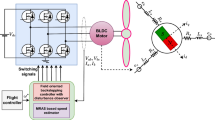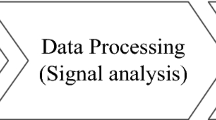Abstract
This paper focuses on modeling and intelligent control of the new Eight-Rotor MAV which is used to solve the problem of low coefficient proportion between lift and gravity for Quadrotor MAV. The dynamical and kinematical modeling for the Eight-Rotor MAV was developed which has never been proposed before. Based on the achieved dynamic modeling, two types of controller were presented. One type, a PID controller is derived in a conventional way with simplified dynamics and turns out to be quite sensitive to sensor noise as well as external perturbation. The second type controller is the Neuro-Fuzzy adaptive controller which is composed of two type-II fuzzy neural networks (TIIFNNs) and one PD controller: The PD controller is adopted to control the attitude, one of the TIIFNNs is designed to learn the inverse model of Eight-Rotor MAV on-line, the other one is the copy of the former one to compensate for model errors and external disturbances, both structure and parameters of T-IIFNNs are tuned on-line at the same time, and then the stability of the Eight-Rotor MAV closed-loop control system is proved using Lyapunov stability theory. Finally, the validity of the proposed control method has been verified through real-time experiments. The experimental results show that the performance of Neuro-Fuzzy adaptive controller performs very well under sensor noise and external disturbances, and has more superiority than traditional PID controller.
Similar content being viewed by others
References
P. Pounds, R. Mahony, and P. Hynes, “Design of a four-rotor aerial robot,” Proc. of Australian Conference on Robotics and Automation, pp. 145–150, 2002.
P. McKerrow, “Modelling the Draganflyer fourrotor helicopter,” Proc. of the IEEE International Conference on Robotics and Automation, pp. 3596–3601, 2004.
S. Bouabdallah, A. Noth, and R. Siegwart, “PID vs. LQ control techniques applied to an indoor Micro-Quadrotor,” Proc. of IEEE International Conference on Intelligent Robots and Systems, vol. 14, pp. 2451–2456, 2004.
A. Tayebi and S. McGilvray, “Attitude stablilization of a VIOL quadrotor aircraft,” IEEE Trans. on Control Systems Technology, vol. 14, pp. 562–571, 2006.
B. Erginer and E. Altug, “Modeling and PD control of a quadrotor VTOL vehicle,” Proc. of the IEEE Intelligent Vehicles Symposium, pp. 894–899, 2007.
D. Lee, H. J. Kim, and S. Sastry, “Feedback linearization vs. adaptive sliding mode control for a quadrotor helicopter,” International Journal of Control, Automation, and Systems, vol. 7, no. 3, pp. 419–428, 2009.
C. Coza and C. J. B. Macnab, “A new robust adaptive-fuzzy control method applied to quadrotor helicopter stabilization,” NAFIPS Annual meeting of the North American Fuzzy Information Society, vol. 3, pp. 454–458, 2006.
J. T. Spooner and M. Passino, “Stable adaptive control using fuzzy systems and neural networks,” IEEE Trans. on Fuzzy Systems, vol. 3, pp. 339–359, 1996.
R. Ordonez and K. Passino, “Stable multi-input multi-output adaptive fuzzy/neural control,” IEEE Trans. on Fuzzy Systems, vol. 3, pp. 345–353, 1999.
P. Melin and O. Castillo, “A new method for adaptive model-based control of non-linear dynamic plants using a neuro-fuzzy-fractal approach,” Soft Computing Journal, vol. 2, pp. 171–177, 2001.
X. Lou, Z. Sun, and F. Sun, “A new approach to fuzzy modeling and control for nonlinear dynamic systems: neuro-fuzzy dynamic characteristic modeling and adaptive control mechanism,” International Journal of Control, Automation, and Systems, vol. 7, no. 1, pp. 123–132, 2009.
P. Melin and O. Castillo, “Intelligent control of complex electrochemical systems with a neurofuzzy-genetic approach,” IEEE Trans. on Industrial Electronics, vol. 5, pp. 951–955, 2001.
M. J. Er, C. B. Low, K. H. Nah, M. H. Lim, and S. Y. Ng, “Real-time implementation of a dynamic fuzzy neural networks controller for a SCARA,” Microprocessors and Microsystems, vol. 9–10, pp. 449–461, 2002.
C. H. Lee, Y. C. Lin, and W. Y. Lai, “Systems identification using type-2 fuzzy neural network (type-2 FNN) systems,” Proc. IEEE Int. Symp. Comput. Intell. Robot. Autom., vol. 3, pp. 1264–1269, 2003.
C. H. Wang, “Dynamic optimal training for interval type-2 fuzzy neural network (T2FNN),” IEEE Trans. Syst., Man, Cybern. B, vol. 3, pp. 1462–1477, 2004.
X. J. Chen, D. Li, and Z. H. Xu, “Adaptive double axes motion control system based on Type-II fuzzy neural networks,” Optics and Precision and Engineering, vol. 20, 2011.
D. Li, X. J. Chen, Z. H. Xu, Y. Fan, and N. W. Da, “A type-II fuzzy neural networks with self-organizing recurrent intervals for dynamic time-varying system identification,” Optics and Precision and Engineering, vol. 19, pp. 1406–1413, 2011.
J. S. R. Jang, “ANFIS: adaptive-network-based fuzzy inference system,” IEEE Trans. on Systems, Man, and Cybernetics, vol. 3, pp. 665–684, 1993.
Author information
Authors and Affiliations
Corresponding authors
Additional information
Recommended by Editorial Board member Young Jae Lee under the direction of Editor Jae Weon Choi.
This work was supported by National Natural Science Foundation of China NSFC 50905174.
Xiangjian Chen is a Ph.D. student at the Department of Mechanical and Electronic Engineering, Chang Chun Institute of Optics Fine Mechanics and Physics, Chinese Academy of Sciences, China. She received her Master degree at university of North East Dian Li. Her research interests include intelligent control and Micro aircraft vehicle.
Di Li studies embedded operation system and control, and he is a Ph.D. student at the Department of Mechanical and Electronic Engineering, Chang Chun Institute of Optics Fine Mechanics and Physics, Chinese Academy of Sciences, China. His interests include embedded operation system, image processing and Micro aircraft vehicle.
Yue Bai received his Ph.D. degree at the Department of Mechanical and Electronic Engineering, Chang Chun Institute of Optics Fine Mechanics and Physics, Chinese Academy of Sciences, China in 2006. His interests include automatic control and dynamics for MAV, and friction lubrication, space flywheel practical technology under extreme conditions.
Zhijun Xu is serving as Ph.D. supervisor and working at Chang Chun Institute of Optics Fine Mechanics and Physics, Chinese Academy of Sciences, China. His interests include automatic control and electronics.
Rights and permissions
About this article
Cite this article
Chen, X., Li, D., Bai, Y. et al. Modeling and Neuro-Fuzzy adaptive attitude control for Eight-Rotor MAV. Int. J. Control Autom. Syst. 9, 1154–1163 (2011). https://doi.org/10.1007/s12555-011-0617-1
Received:
Revised:
Accepted:
Published:
Issue Date:
DOI: https://doi.org/10.1007/s12555-011-0617-1




